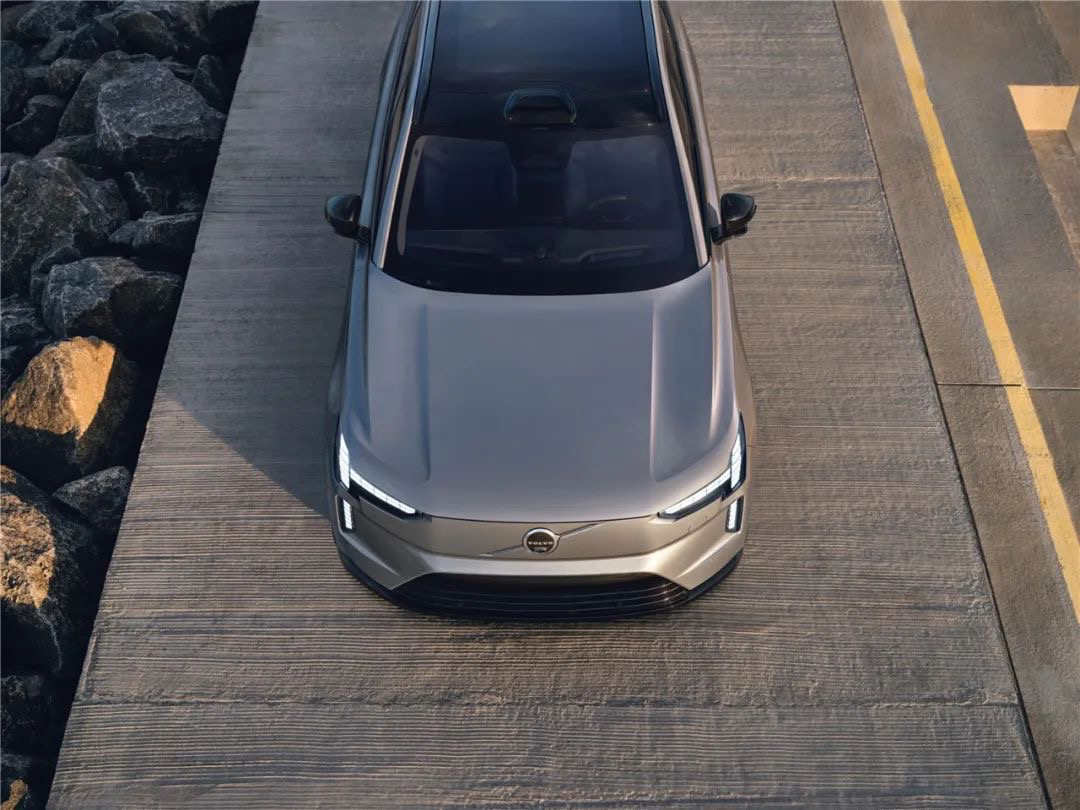Author: Michelin
“It’s only when the tide goes out that you learn who has been swimming naked.”
This quote is perfect for describing the automotive industry in the past year. Shortages of chips and rising raw material prices, combined with the cold wave that hit in the second half of the year, seemed to seal the fate of most car companies’ performance. Therefore, we have heard too many encouraging words recently, too many expectations and beautiful visions for the new year, to the point that when someone finally speaks the truth, it seems a bit too honest:
About the market, “Is the market good for 2022? Actually, it’s not at all.”
About Volvo, “Actually, it’s not living well, it’s just living.”
About electric cars, “Even if we switch from oil to electricity, we’re not putting our full effort into promoting it.”
About the younger generation, “We don’t overly pursue youthfulness, how old is considered young?”
….
These words come from the Volvo Cars 2022 year-end performance communication meeting, where Volvo had a “frank discussion” about the past year. It is said that facing oneself can lead to better progress, and I wonder how Volvo will respond to the new year after this self-analysis?
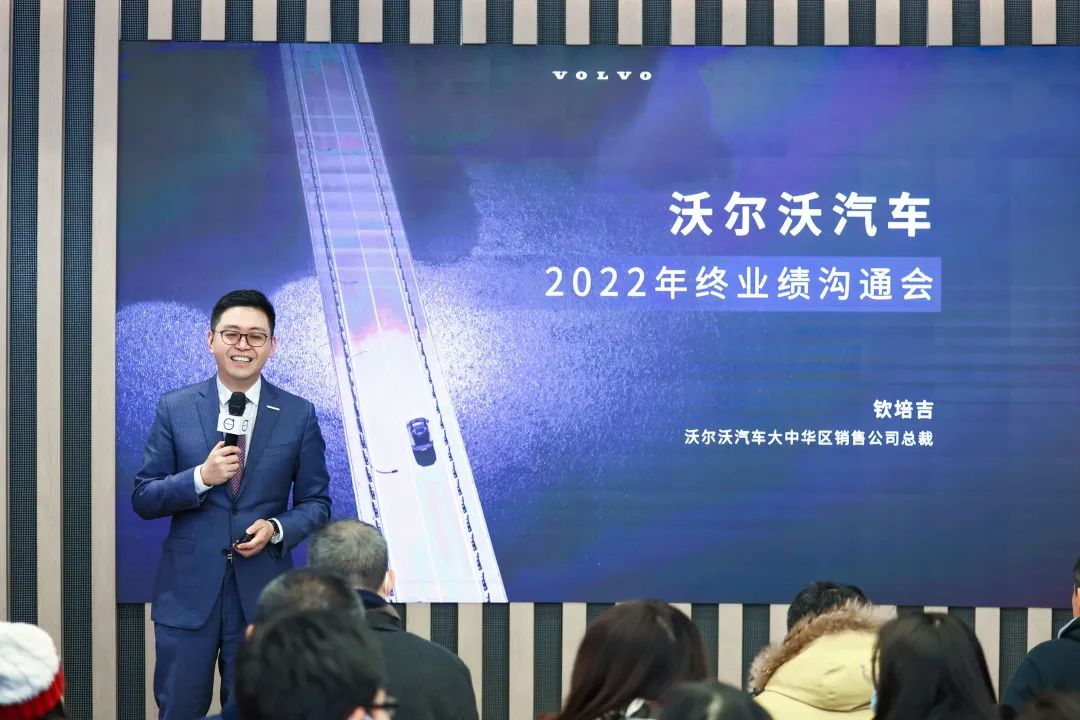
In 2022, Stability is Winning
In 2022, we have experienced too many changes, including production stoppages due to the pandemic, the collapse of reputation for price-hikes, the change of sales champion for new enterprises, the rise of the new electric king, the decline of the petrol car market…
In the face of these huge changes, Volvo’s PPT reads, “Living well in 2022”. However, according to Qin Peiji, President of Volvo Cars Greater China Sales Company, Volvo in 2022 was only just alive.
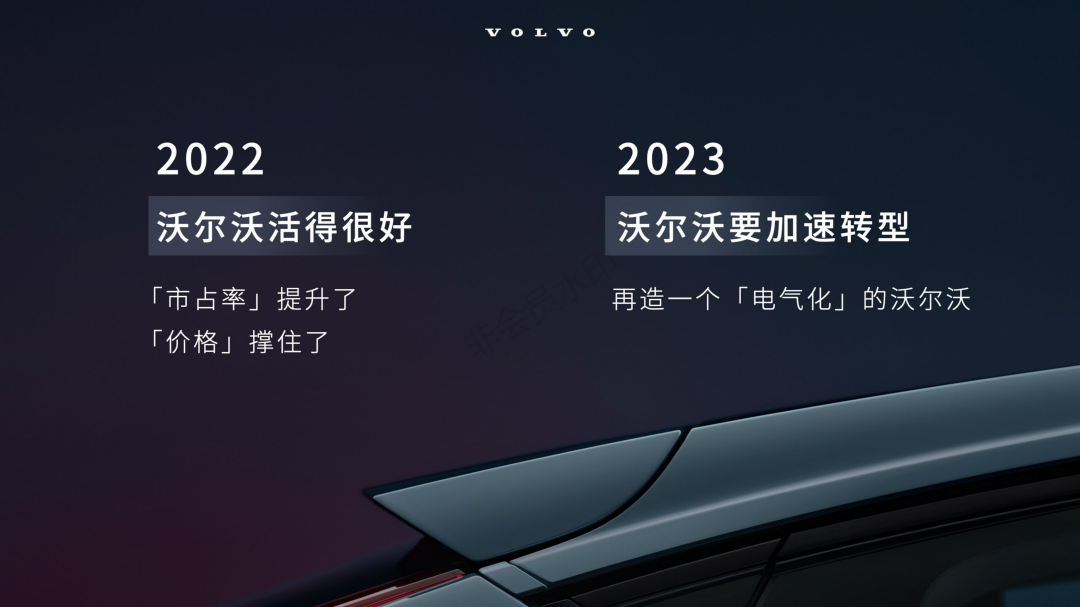
In 2022, Volvo sold 162,000 new cars in the Chinese market, a slight decline from last year’s 171,000, but against the backdrop of the entire Chinese market’s capacity decreasing by 8% in 2022, and petrol luxury car sales dropping from an expected 3 million to 2.5 million, Volvo’s market share still increased by 0.1% despite the decline in sales, reaching 6.4%.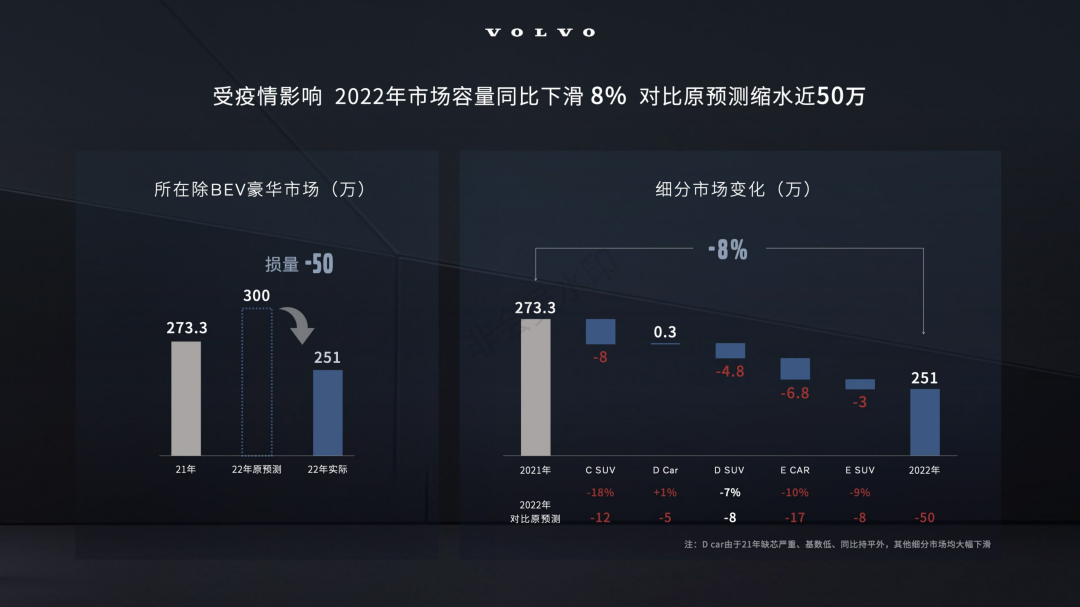
It is gratifying that this increase in sales is not achieved through sacrificing profits for sales. “We didn’t unleash a price war, didn’t put pressure on dealerships, and didn’t participate in the heavy discounting of luxury cars in the last two months,” explained Qin Peiji. Therefore, Volvo and its dealership partners have maintained a relatively strong profit.
In the context of the average price of cars in the Chinese market gradually decreasing by about 5% per year, the domestic automobile industry will experience a drop in average price of about 5% in 2022, and Volvo estimates that end prices will drop by 3.2%. If “second-level gross margin” is used to measure dealer profits, Volvo’s dealer second-level gross margin in the past year was about 2.7%, while the industry average is 0.6%.

“The tide has receded, but Volvo is relatively stable.” Qin Peiji described Volvo’s sales system in this way. Indeed, seeking survival in adversity, stability means winning.
A year ago, when Qin Peiji accepted an interview with GeekCar, he mentioned “systematic capabilities” many times. At that time, many people probably found it difficult to experience the power of systematic integration, and direct sales models that can more promptly reach customers seemed to be trending. Does the dealership model still have a future? However, in such a difficult year, more people felt the significance of systematic integration and long-term thinking.
If certain indicators are used to evaluate this work, there were approximately 5.15 million leads and 918,000 groups of first-time store visits for the entire year, as well as natural in-store data of hundreds of thousands of groups per month prior to the epidemic. This is a long-term KPI for Volvo’s market development work and the result of brand strength improvement.
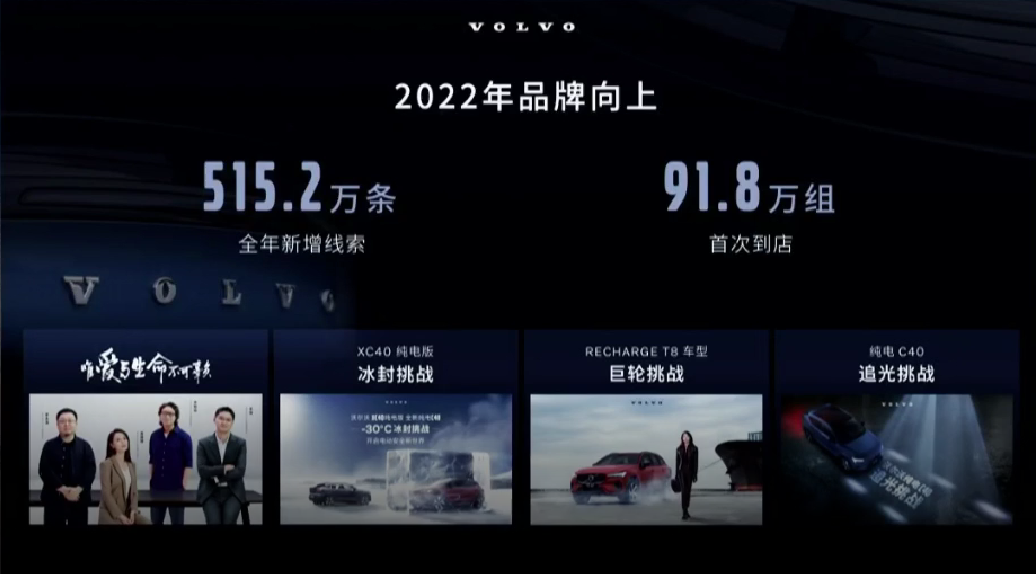
Nowadays, there is a phenomenon in the automotive industry such that domestic brands have all embarked on the “having more children makes good fighting” route, particularly favoring the establishment of new brands. Qin Peiji gave a good example at the press conference that may explain this behavior: “I had a discussion with the head of a traditional company’s new energy department, and he said it was impossible. How could a traditional brand transfer to electrification? If we could transfer to electrification, we’d do it ourselves. Wasn’t the brand we originally used good enough?”The difficulty of transitioning traditional fuel brands to electrification is greater than building a new brand from scratch.
In this aspect, Volvo is fortunate. If safety was not an outstanding demand ranking behind driving, luxury, and comfort during the traditional fuel era, now, in this era of intelligence, electrification, and uncertainty, safety has taken on an unprecedented significance. Additionally, for Volvo, the cards they can play in terms of safety go far beyond seat belts and active/passive safety technologies; BMS, intelligent driving, intelligent cockpit, and other innovative technologies allow the brand value of safety to move from traditional fuel vehicles to intelligent electric vehicles.
As a result, from 2018 to 2021, according to the NCBS (New Car Buyers Survey), the brand factor in Volvo car purchases has grown rapidly, accounting for approximately 20% of new customers, second only to BBA. From the internal survey data of Volvo’s CRM, we can see that the safety of Volvo has continuously increased over the past three years.
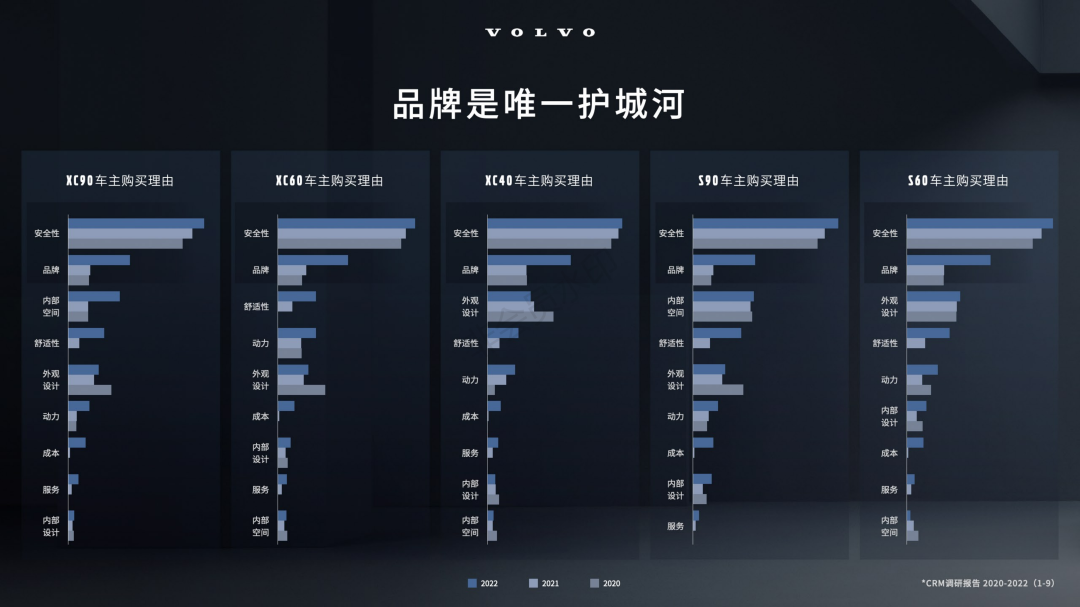
In 2023, moving forward with tasks heading to deeper waters
“If we only sell fuel cars, and if the world remains the same, our system can continue to operate, and I can comfortably be the president of a sales company here.” This is how Chin Peiji described the current situation.
The automotive industry is a red ocean, and new energy vehicles face an extremely dark red ocean filled with internal competition, while the traditional fuel vehicle market is constantly threatened by new energy vehicles. In the precarious situation of the fuel vehicle field, how to survive by diving into even more intense deeper waters is an unavoidable problem for traditional car companies.
For Volvo in 2023, four major tasks need to be addressed: products, brands, business models, and digitization.
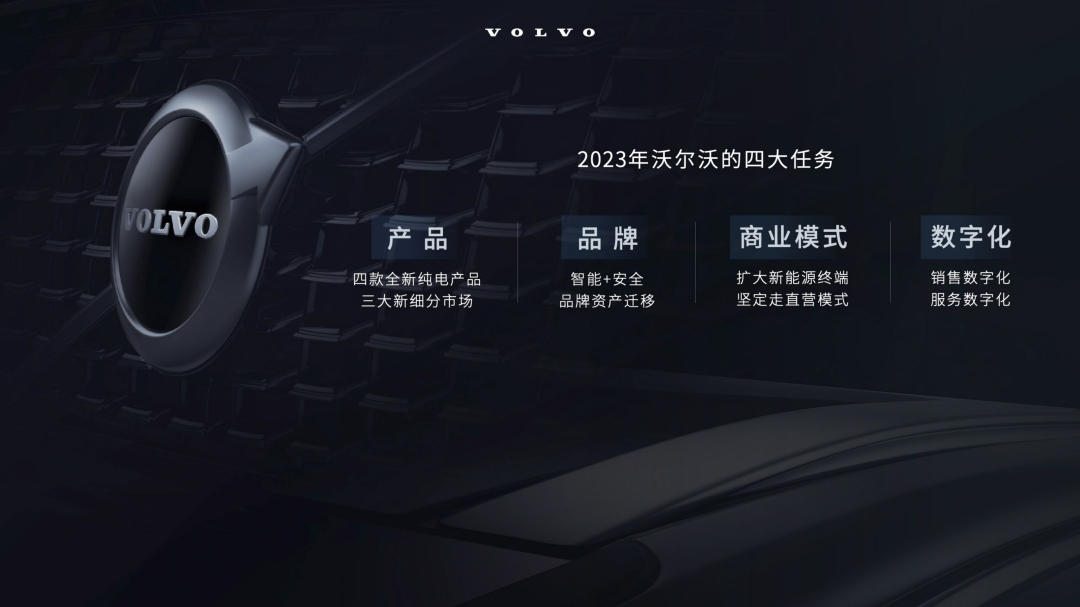
Apart from the brand transformation mentioned earlier, for car companies, products are their hard power, and for a car company in 2023, electric vehicle models are their strong suit. In 2022, the sales of Volvo’s pure electric vehicles in China increased by 201%, but Chin Peiji bluntly stated that “it’s still just switching from fuel to electric,” “we’re still selling them.” It is evident that the two currently selling pure electric vehicle models, the XC40 Pure Electric and C40, cannot represent Volvo’s strength in electrification.In 2023, Volvo finally launched their own pure electric platform and introduced four new models at once: the fully electric EX90 SUV, the high-end EX90 EXCELLENCE, a small pure electric SUV, and a luxury pure electric MPV, all at the same stage.

On the currently released EX90, we can see Volvo’s accumulation of knowledge in the areas of electrification and intelligence over the past few years: a brand-new central electronic and electrical architecture, Luminar’s lidar, the pioneering DUS driver perception system, and their self-developed BMS, etc. It is said that traditional car companies are slow to turn around, but the technologies developed during this turning period will finally be implemented in their products. The lessons learned from previous experiences on the aggressive path of electrification tell us that it is not terrifying to turn around slowly, but rather more important to turn around steadily.

The sudden acceleration of product development poses significant challenges to sales systems and business models.
Regarding business models, Volvo has divided into two parts, hardware and software. On the one hand, they are setting up hardware facilities in brand experience stores, city center stores, and 4S stores. For self-operated stores, many people think that self-operated stores are exclusive to electric vehicles, which helps everyone accept Volvo’s electrification image.
Compared with hardware, the more challenging aspect is how to manage these stores with dealers, namely the software portion. Based on the principles of fixed pricing and light inventory, it is necessary to meet customer experience requirements while also considering dealer profits. “The future will not only be a direct sales world,” but it is impossible without direct sales. For large auto companies, a systematic and comprehensive business model can better satisfy needs.
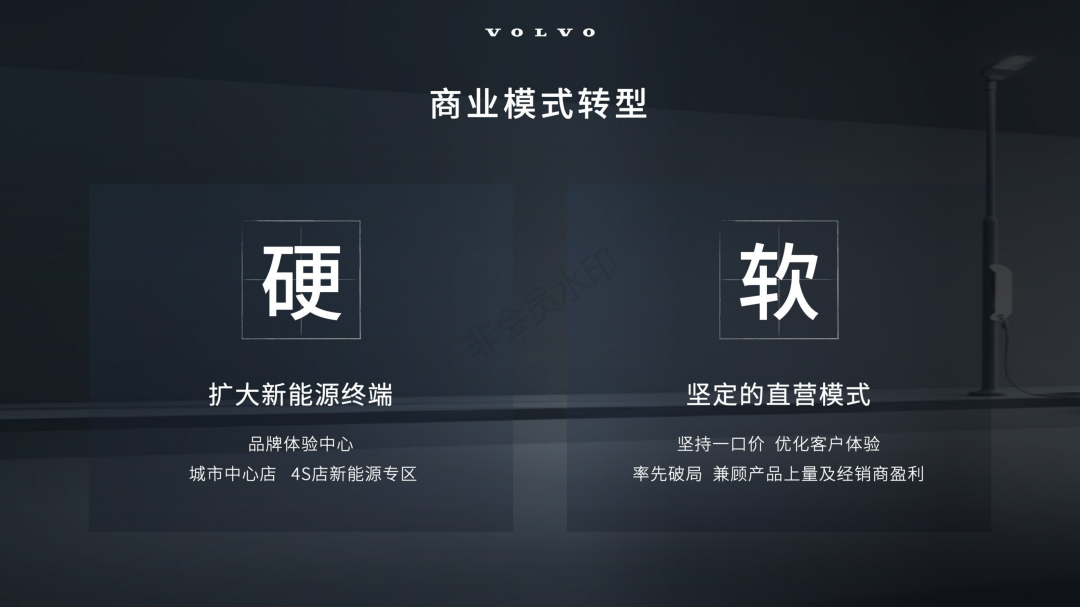
In the face of the massive system, digitalization is a useful assistant. Nowadays, we are familiar with the term “digitalization,” which can be a function, a technology, or a form, but ultimately, digitalization is not the goal but rather a tool, a means of directly reaching consumers. For users, the ultimate goal of digitalization is to bring convenience, and for enterprises, the ultimate goal of digitalization is to improve management efficiency and change management models.# Translation
Qin Peiji believes that traditional brands cannot spoil their fans. “It is really impossible to spoil fans in a fancy way”. However, with the help of digitization, more solid services can be provided, and the opaque after-sales management can be made transparent through digitization. Users can see the status and time of each link after sending their car for maintenance on the APP; spare parts can be delivered within one day with the support of JD Logistics; in the transparent APP, the problems encountered by users will not be perfunctory…
Similar digitization may not sound so glamorous, but the service itself is not so glamorous. Many services provide convenience, and these conveniences really provide convenience for users.
Finally
“Volvo wants to be ‘tossed’, but cannot be blindly tossed.” This is Qin Peiji’s positioning of Volvo in 2023 during the communication meeting. Nowadays, we are often afraid that new brands are too tossed, and that traditional brands are not tossed enough.
If we have seen the reshuffle of the automotive industry in the second half of 2022, the reshuffle in 2023 will only be more intense. Hoping to see more traditional car companies fight against this reshuffle with a “tossing” heart and a firm goal.
This article is a translation by ChatGPT of a Chinese report from 42HOW. If you have any questions about it, please email bd@42how.com.
